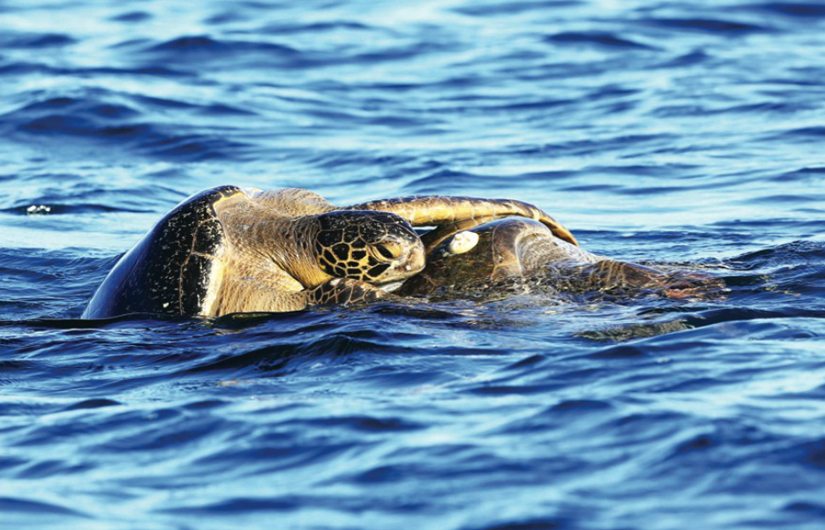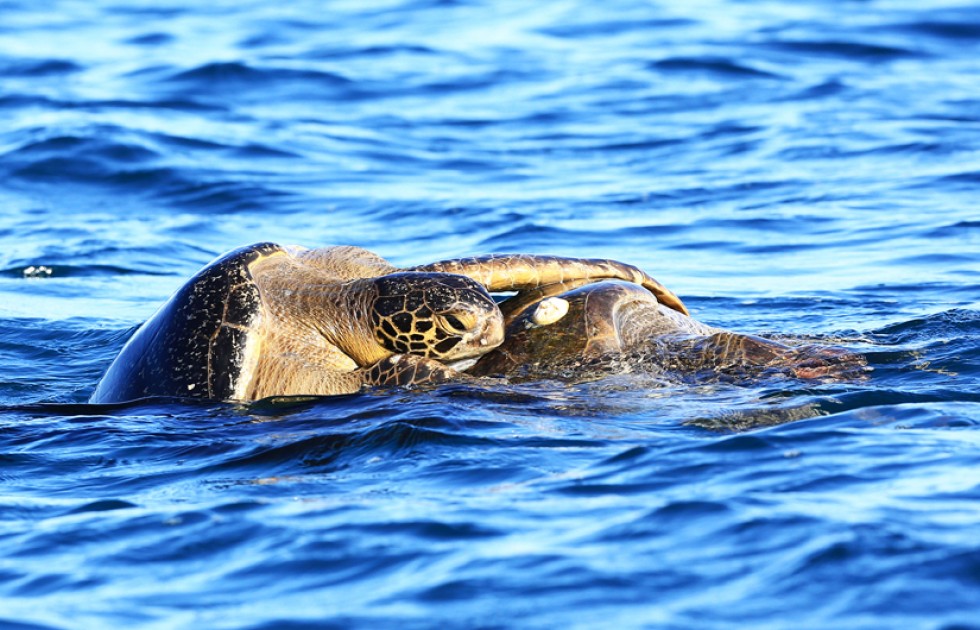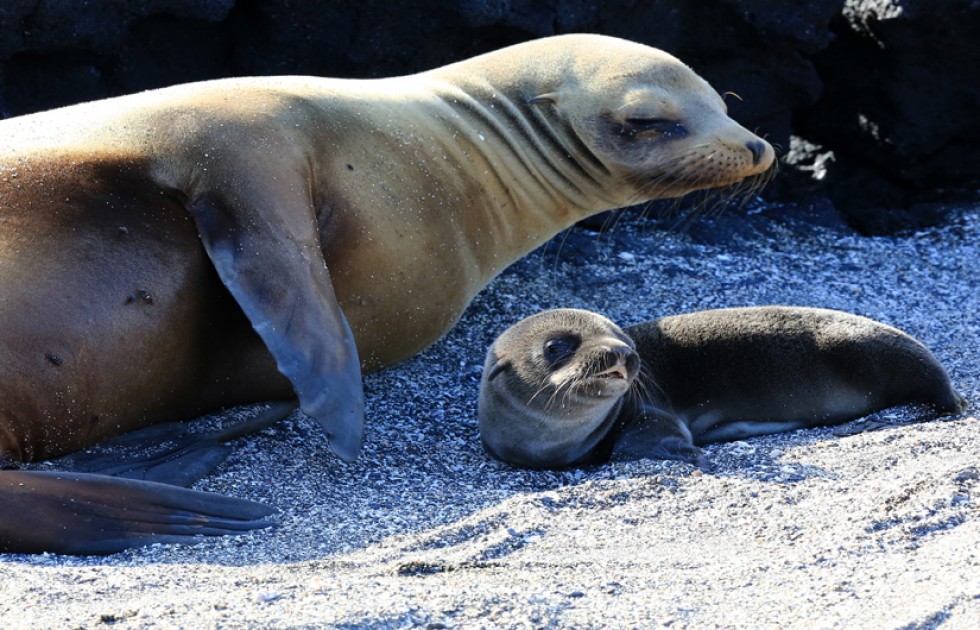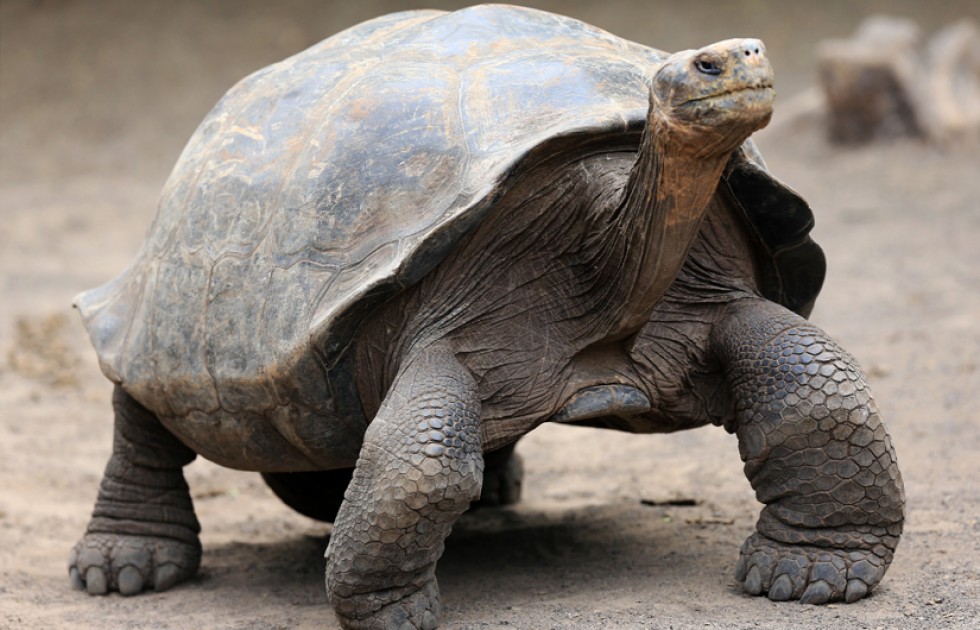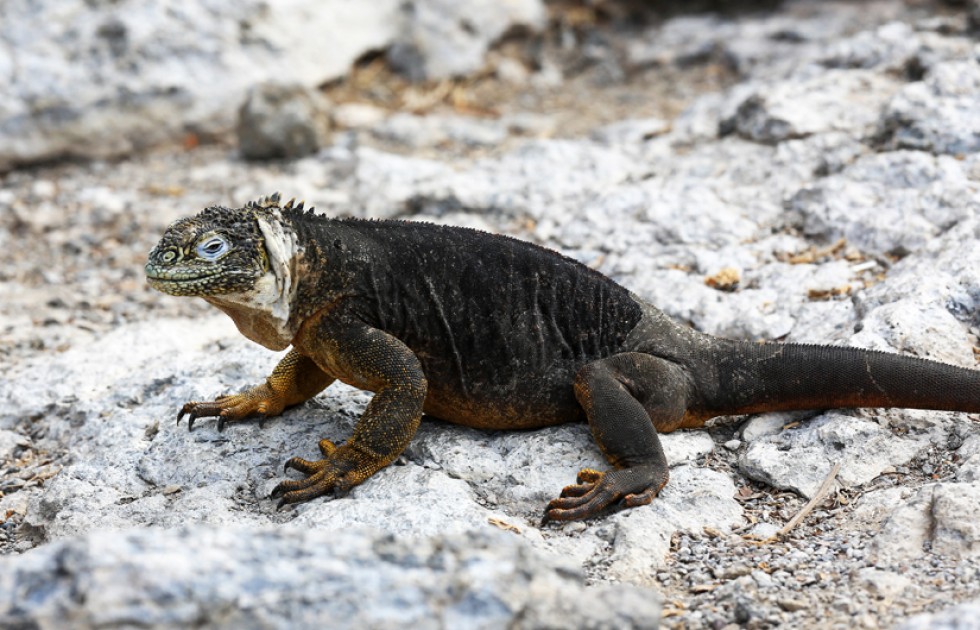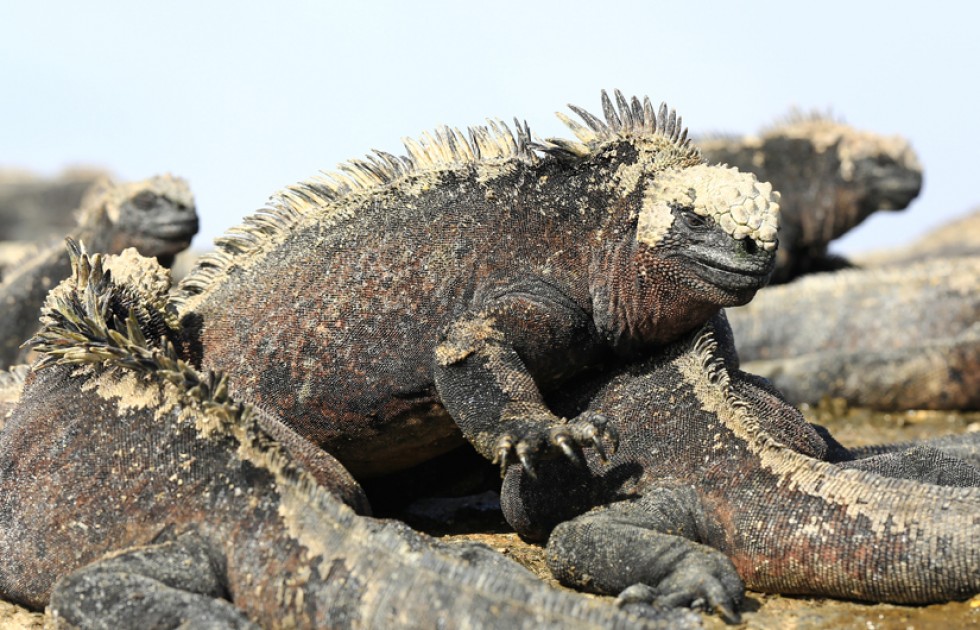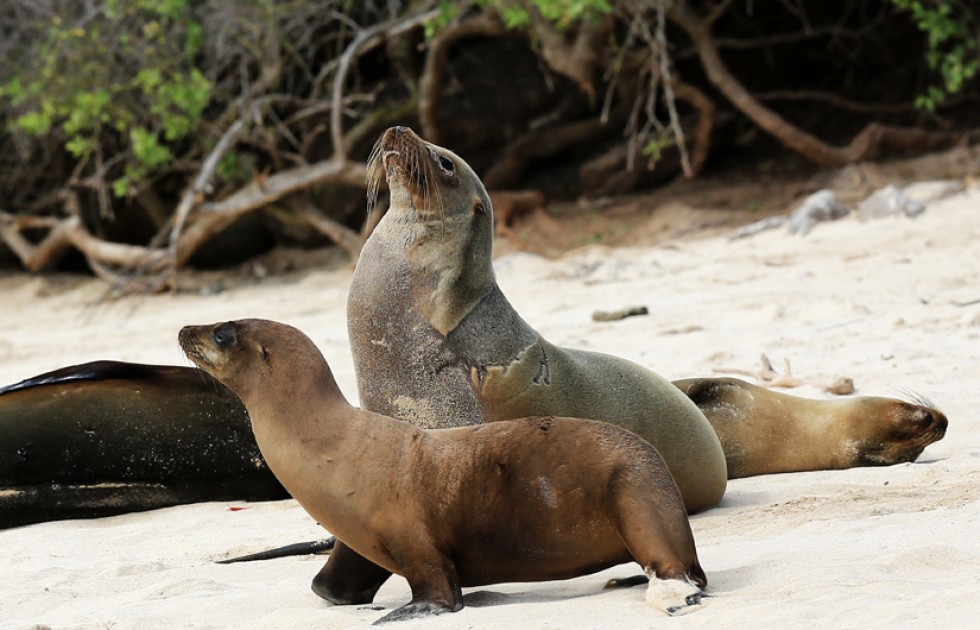PHOTOGRAPHINGTHE GALAPAGOS WILDLIFE (PART2)
After looking at its unique sea birds in the first instalment, in the second we study the archipelago’s fascinating mammals and reptiles
Besides the sea birds, mammals and reptiles are also the mainattractions of the Galapagos. Twospecies of mammals that I saw were the Galapagos sea lion and Galapagos fur sea lion.
The Galapagos sea lion is the largest marine mammal found on land in the archipelago. A male or bull sea lion can weigh up to 250 kilogram sand is distinguished from a female by its huge size and a conspicuous hump on the forehead, while the female has a smooth forehead. They form large communities on several islands such as Santa Fe, Española, South Plaza,San Cristobal, Santa Cruz and Fernandina. They seem to be friendly to humans and do not feel threatened by the influx of tourists who often land on the beaches near the sea lion communities.
About 70 per cent of the sea lion’s diet is composed of sardines. A sea lion may dive to a depth of 30 to 60 metres to feed during the day. The sea lions mate in the water, and the female gives birth on land. A new born sea lion pup is preyed on by frigatebirds, gulls and hawks. Mother and pup recognize one another by the cry and the smell. A pup suckles its mother for one to two years then is left on its own. The lifespan of sea lions in the wild is 18 to 20 years. The Galapagos sea lion is classified by the International Union on Conservation of Nature(IUCN) as an endangered species. Sea lions differ from seals in the following respects:
- Sea lions have external ears;seals do not.
- Sea lions have strong front flippers; seals do not.
- Sea lions can stand and walk on their front flippers; seals cannot and they creep on the ground.
- Sea lions swim with their front flippers, while seals swim with their posterior flippers.
The other mammal I saw was the Galapagos fur sea lion, which is endemic to the Galapagos and is distinguished from the sea lion by its smaller size, shorter snout and larger eyes. Males weigh up to 75 kg and females up to 35 kg. They alway sinhabit rocky areas and never on sandy beaches, hiding from the sun. They feed at night on squid and schools of small fish and can dive to adepth of 40 to 100m. The Galapagos fur sea lion is also classified by the IUCN as an endangered species. I found a family of five fur sea lions, including the one in the photo, livingin a grotto at James Bay on Santiago.
Aside from being referred to asislands of sea birds, the Galapagos are well known as being home to reptiles, and the main attractions are the giant tortoise, the land iguana and the marine iguana. The archipelago is named after the tortoises; galapago is an old Spanish word for “saddle”, as the first to rtoises the Spanish seafarers saw here had carapaces shaped very much like a Spanish saddle.
The giant tortoise can be divided into two main groups: saddleback tortoises and dome-shaped tortoises. Both have a similar carapace length ofup to 1.5m and can weigh up to 300kg. The shell size and shape vary between islands and habitats. The tortoises that inhabit islands with humid highlands are larger, with domed shells and short necks, while those living on islands with dry lowlands are smaller, with saddleback shells and long necks. The Galapagos giant tortoises in the two photos belong to the dome-shaped carapace group. Their lifespan in the wild is over 100years. The IUCN lists the Galapagos giant tortoise as a vulnerable species.
My adventure to photographthe wildlife of the Galapagos ended with a hope to return again to this unique archipelago, a must-visit destination for wildlife and naturephotographers.


